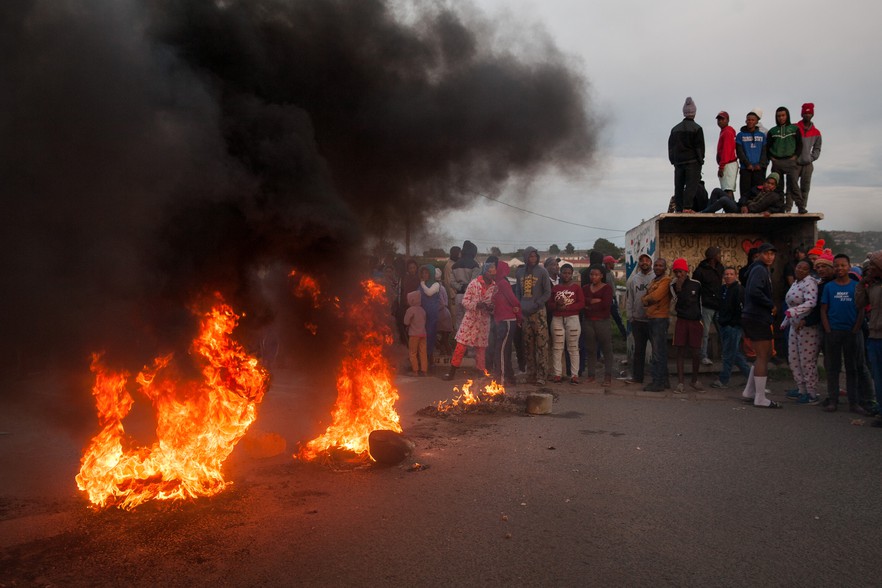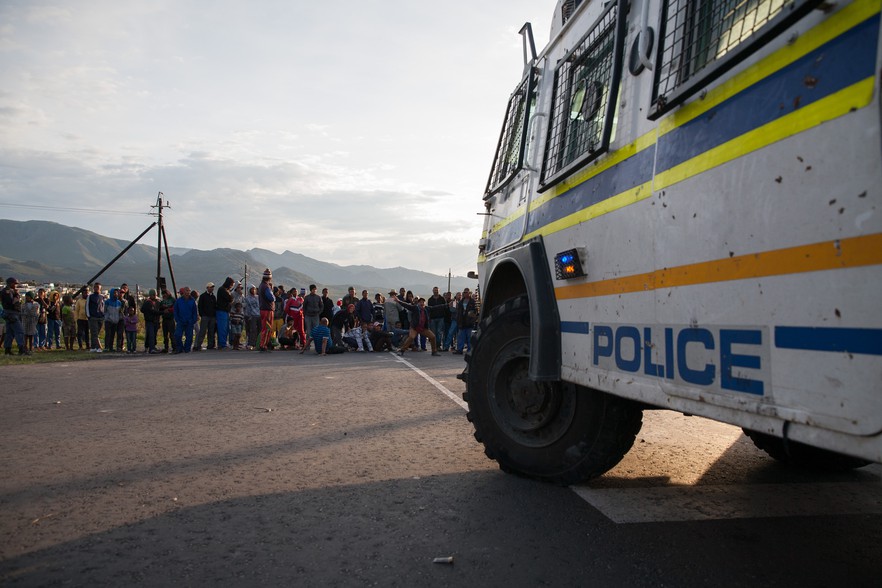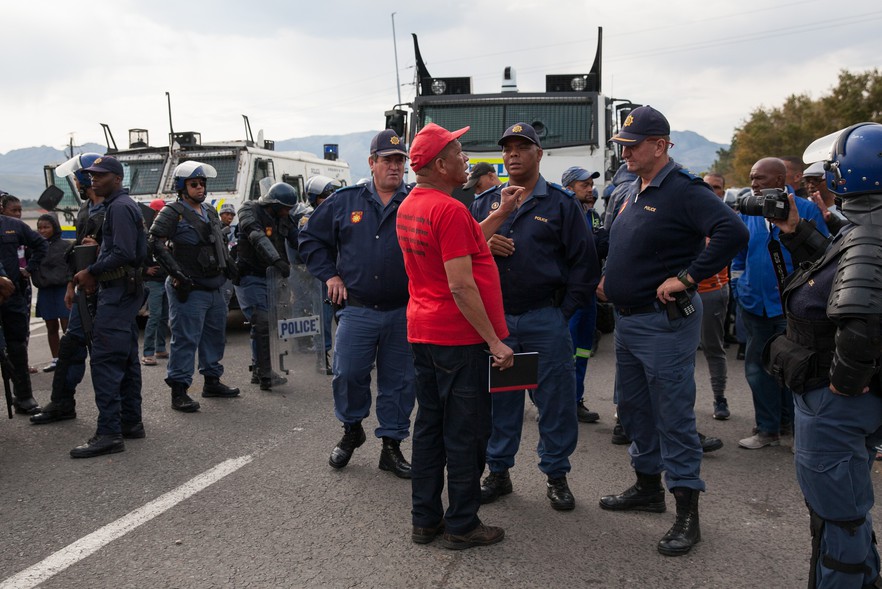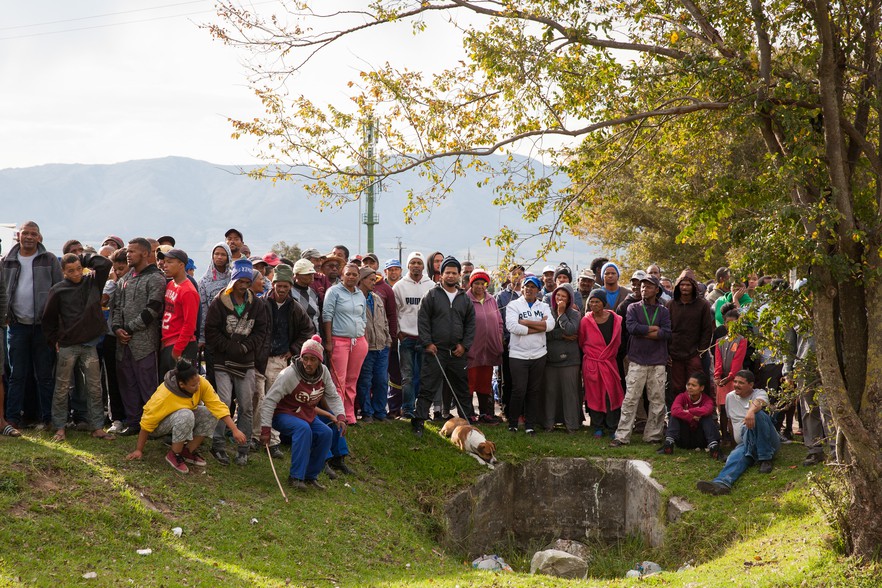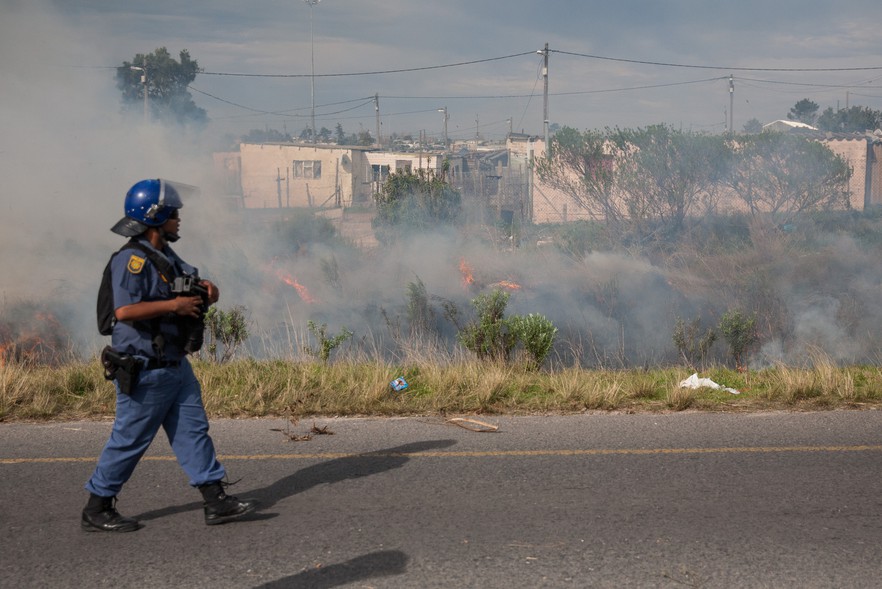Grabouw community divided as protests continue
Tensions rise along racial lines
Since 6 May, about 60 farm workers from Oak Valley Estate in Grabouw have been protesting with the help of some community members. Supported by the Commercial, Stevedoring, Agricultural and Allied Workers Union (CSAAWU), their demands include a wage increase to R250 per day, an end to labour brokering, and the removal of single sex hostels.
During the protests, the N2 highway near Sir Lowry’s Pass has been blocked frequently, preventing many people from going to work. Schools have also been affected. Instead of galvanising support, the protests have now divided the community.
On Tuesday, after protesters were dispersed from the N2 highway, they regrouped and gathered in Ou Kaapse Way (adjacent to the N2) which is the entrance to the township.
“The community is being held hostage,” said David Le Roux, a resident of Grabouw who hasn’t been able to get to work for two days now. When Le Roux left for work at 5am on Tuesday morning his bus was stoned preventing him from leaving. “They are preventing us from going to work,” he said.
Farm workers and supporting community members march down Ou Kaapse Way.
“After 25 years of freedom this is not the way to live”, said Caleb Phula, an area committee member who is supporting the protesters. Phula said that the Coloured community on “the other side of town” is “provoking us”.
Phula denied that protesters are stopping people from going to work. “We’re not fighting them,” he said. As farm workers and their supporters began to march, some residents wanted the streets cleared of burning debris. This caused more tension.
Satellite image of part of Grabouw from Google Maps.
The township in Garbouw is separated by Ou Kaapse Way (red line). The west side has mostly black African Xhosa-speaking residents living informally in shacks while the east has mostly Coloured Afrikaans-speaking residents staying in brick homes.
One of the the informal settlements along the west side of Ou Kaapse Way where most residents are Xhosa-speaking.
Kgoliso Nqoanyane does not support the protests.
But opinion is not unanimous on either side of the divide. Kgoliso Nqoanyane said that she did not support the protest. Because the road was blocked she could not travel to Parow to write her first-year UNISA exam. “They didn’t understand,” she said.
Children in school uniform watch the protest.
Some schools were closed in the area due to safety concerns. A matric student said that teachers were unable to get to school because of the N2 being closed. He also said that exams had to be postponed “which is putting pressure on us”. He said that because of the protests, he couldn’t focus or study.
CSAAWU representative Karel Swart negotiates with police.
Karel Swart of CSAAWU was arrested on Monday but was released a few hours later. He said that he had been charged with “intimidation” and has to appear in court in June. CSAAWU is organising the striking workers.
Police officers stand between the divided community.
Police officers created a wall between black African protesters and Coloured residents wanting the protest to stop. A police officer explained that they were acting as a “buffer”.
Officers said that they were trying to convince protesters to call off the march to Oak Valley Estate until Wednesday. The police have said they will escort the striking workers to the farm on Wednesday in an organised protest. But the protesters did not agree.
Non-protesting residents watch as police tell protesters to leave.
“I don’t have the words to describe when Coloured and poor people fight with each other,” said Swart. This conflict “is playing into the hands of the farmers and the municipality”. Regardless of colour “we are all poor and we belong to the working class”.
Swart said that the wage increases would benefit all farm workers from all communities. He said that the low wage was responsible for the unrest and violence, and that the farm owners were not taking responsibility. “They put the blame on poor people who stay in the informal settlement.”
After police dispersed protesters with tear gas, the protesters burnt bushes and hurled stones.
Police disperse protesters with tear gas.
Police used tear gas to disperse the protesters. They also used rubber bullets, but sparingly. After the protest was dispersed, protesters burnt bushes and hurled stones. A large number of people throwing stones were children. GroundUp did not see any arrests.
A police officer patrols the informal settlement.
Hugo Geldenhuys of the Theewaterskloof Municipality said that road closures were affecting the entire area. “It also affects businesses as they cannot do their trade,” he said.
He said that protesters close the national highway because it has become “a quick way for people to get their demands met”. He said the workers have been heard and “there’s no need for further action”.
Support independent journalism
Donate using Payfast

Next: Durban mayor facing corruption charges
Previous: City of Johannesburg can’t cope with Alexandra land occupations, inquiry told
© 2019 GroundUp.
This article is licensed under a Creative Commons Attribution-NoDerivatives 4.0 International License.
You may republish this article, so long as you credit the authors and GroundUp, and do not change the text. Please include a link back to the original article.

